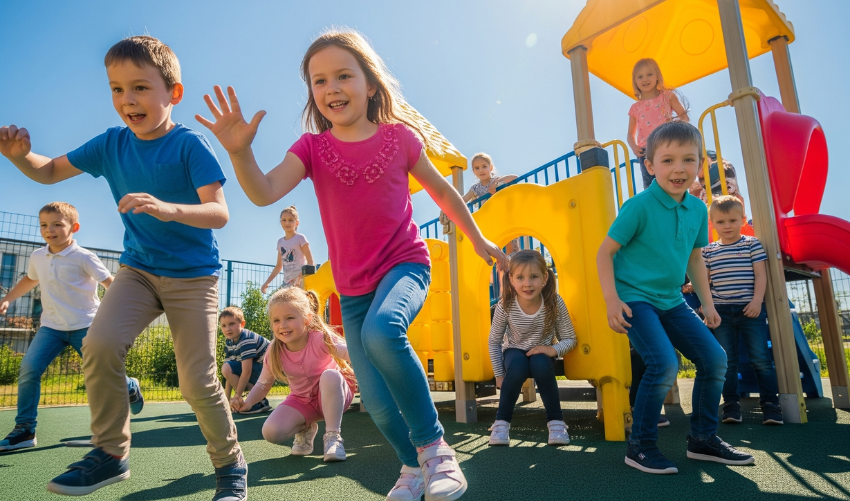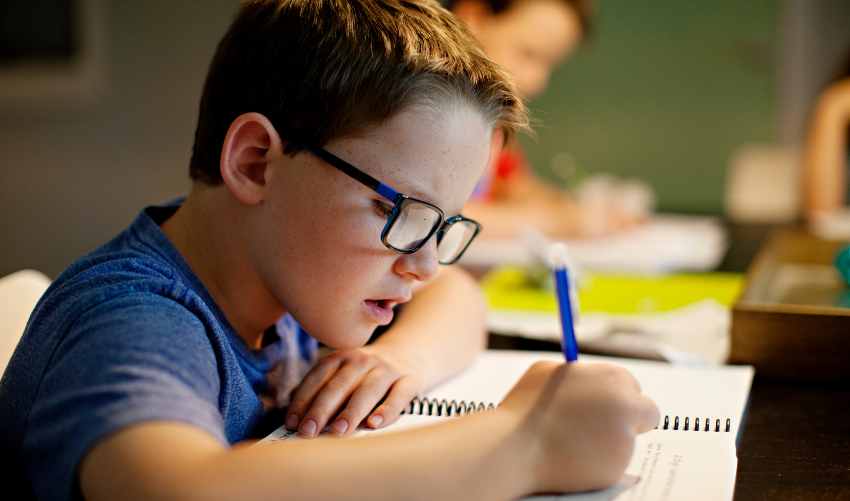If you have kids aged 5 to 12, you’re likely looking for toys that not only entertain but also support their development. In this guide, we’ll explore the top toys that school-age children love.
From educational games to exciting outdoor gear, we’ve got you covered. Get ready to make informed choices that will delight your kids and keep them engaged for hours.
Navigating The World Of School-age Play
Navigating the world of school-age play reveals how children engage with toys. Their interests evolve quickly, reflecting their developmental stages. This guide will dive into the types of toys that truly resonate with school-age children.
The Evolving Landscape Of Play
Children aged 5-12 are developing rapidly, moving from imaginative to more complex play. Their interests shift from simple cause-and-effect to strategy, social interaction, and skill-building. At this stage, play becomes more than just fun. It becomes a way for them to understand the world.
In this age group, toys play a vital role. They often seek toys that challenge them and reflect their growing independence. Here are some key aspects of their play:
- Imagination: Children begin to create scenarios and stories.
- Collaboration: Group play helps build teamwork skills.
- Problem Solving: Toys that require strategy enhance critical thinking.
- Physical Activity: Many toys encourage movement and coordination.
Here’s a table showing some popular toy categories for this age range:
| Toy Category | Examples | Benefits |
|---|---|---|
| Building Sets | LEGO, K’NEX | Enhances creativity and fine motor skills |
| Board Games | Monopoly, Chess | Encourages strategic thinking and social skills |
| Outdoor Toys | Bikes, Sports Equipment | Promotes physical health and teamwork |
Understanding these dynamics helps parents choose suitable toys for their children. The right toys will not only entertain but also educate.

More Than Just Fun: The Role Of Toys
Toys at this stage are crucial for cognitive, social, and emotional development. They help children learn problem-solving, teamwork, and critical thinking. Engaging with diverse toys supports their growth in various areas.
It’s essential to recognize how toys influence learning. Here are some reasons why toys matter:
- Creativity: Toys that allow imaginative play spark creativity.
- Curiosity: Interactive toys encourage exploration and curiosity.
- Social Skills: Group play with toys fosters friendships and communication.
Different types of toys serve unique purposes. Here’s a brief overview:
| Toy Type | Purpose |
|---|---|
| Art Supplies | Fosters creativity and self-expression |
| Puzzles | Enhances problem-solving and logic skills |
| Role-Playing Toys | Encourages imaginative play and social skills |
The right toys can foster creativity, curiosity, and a love for learning. Selecting toys that align with these developmental needs is key. Parents can help their children thrive during these critical years.
Building & Creative Play: Fostering Imagination
Building and creative play offer a great way to develop skills and promote learning. They foster imagination and creativity. Children learn to express themselves while having fun. This age group enjoys hands-on activities that engage their minds and hands.
Construction Sets (e.g., Legos, Magnatiles)
Construction sets are a favorite among school-age children. They provide hours of entertainment while helping kids learn. These toys develop fine motor skills and spatial reasoning. Children learn to build structures and understand balance and stability.
- Endless possibilities for imaginative building
- Supports teamwork and collaboration when kids play together
- Encourages kids to experiment with shapes and structures
Many kids enjoy using their imagination to create unique designs. Construction sets also teach patience and attention to detail. As children work on their projects, they feel a tangible sense of accomplishment.
Arts & Crafts Kits
Arts and crafts kits are another excellent choice for school-age children. These kits support self-expression and artistic development. Kids can explore their creativity while creating beautiful art. They enjoy using different materials like paint, markers, and clay. Arts and crafts also help develop fine motor skills.
- Encourages exploration of colors and shapes
- Offers a variety of projects to choose from
- Fosters creativity and self-confidence
Crafting provides a fun way for children to express feelings. They learn to plan and execute their ideas. Completing a project gives them a sense of pride.

Strategic & Problem-solving Games: Engaging The Mind
Strategic and problem-solving games are especially important. These games not only entertain but also develop critical skills. They help kids learn to think critically and plan strategically. This type of play promotes social interaction and turn-taking skills. Let’s explore two popular categories: board games and STEM kits.
Board Games & Card Games
Board games and card games are timeless classics. They provide an excellent way for children to engage their minds. These games often involve strategy, planning, and decision-making. Here are some benefits of playing these games:
- Enhances critical thinking and strategic planning.
- Promotes social interaction and turn-taking skills.
- Offers fun – screen-free family engagement.
Popular choices include:
| Game | Age Range | Skills Developed |
|---|---|---|
| Settlers of Catan | 10+ | Strategy, negotiation |
| Uno | 7+ | Decision-making, color recognition |
| Ticket to Ride | 8+ | Planning, critical thinking |
These games not only entertain but also teach valuable lessons. Children learn to think ahead and consider their choices. Playing together encourages family bonding and fun without screens.
Stem & Robotics Kits
STEM and robotics kits are gaining popularity among kids aged 5–12. These kits introduce science, technology, engineering, and math concepts in a fun way. They inspire curiosity and creativity while engaging the mind. Here are some key benefits:
- Develops logical reasoning and computational thinking.
- Prepares them for future technical skills.
- Encourages teamwork and problem-solving.
Some top kits include:
| Kit Name | Age Range | Skills Developed |
|---|---|---|
| Lego Robotics | 10+ | Engineering, programming |
| Snap Circuits | 8+ | Electrical engineering, creativity |
| Thames & Kosmos Chemistry Set | 10+ | Chemistry, scientific thinking |
STEM kits engage kids in hands-on learning. They solve real problems while building and creating. This type of play lays the groundwork for future learning in technology and science.
Outdoor & Active Play: Getting Them Moving
Outdoor play is essential for school-age children. It helps them stay active and healthy. Toys that encourage movement are popular among kids aged 5 to 12. They promote physical activity and gross motor development. Outdoor play allows children to explore, have fun, and make friends.
Sports Equipment & Outdoor Gear
Sports equipment and outdoor gear are vital for encouraging kids to play outside. These toys not only provide fun but also teach valuable skills. They promote teamwork and healthy competition. Here are some popular options:
- Soccer Balls: Great for kicking and teamwork.
- Basketballs: Perfect for shooting hoops and improving coordination.
- Frisbees: Fun for throwing and catching with friends.
- Jump Ropes: Excellent for building endurance and agility.
- Badminton Sets: Encourages active outdoor exploration with friends.
These toys are essential for fresh air and energy release. They help kids build balance, coordination, and confidence. Playing sports together encourages social skills and friendship.

Scooters & Bikes
Scooters and bikes are exciting ways for kids to get moving outdoors. They provide a sense of independence and adventure. Riding helps develop balance and coordination. Both scooters and bikes can be enjoyed alone or with friends.
Popular choices include:
- Kick Scooters: Easy to ride and great for short trips.
- Electric Scooters: Fun for older kids seeking speed.
- Balance Bikes: Ideal for younger kids learning to ride.
- Traditional Bicycles: Perfect for longer rides and outdoor exploration.
Riding these toys encourages physical activity and gross motor development. Kids can explore their neighborhoods and parks. This promotes a healthy lifestyle and keeps them active. Biking and scootering also build confidence as they learn new skills.
Digital & Interactive Entertainment: Screen Time That Matters
Digital and interactive entertainment includes video games, educational apps, and coding toys. These tools can enhance learning and creativity. This section explores how technology can be fun and beneficial for school-age children.
Age-appropriate Video Games
Video games can be a great way for kids to learn and have fun. Age-appropriate games engage children while teaching important skills. They can improve hand-eye coordination and strategic thinking. Many games offer social connection with friends in online multiplayer environments.
Popular video games often feature:
- Engaging narratives
- Problem-solving challenges
- Teamwork and communication skills
Here’s a table of some recommended age-appropriate video games:
| Game Title | Age Group | Key Benefits |
|---|---|---|
| Animal Crossing | 6+ | Creativity and social skills |
| Minecraft | 8+ | Problem-solving and creativity |
| Mario Kart | 5+ | Hand-eye coordination and friendly competition |
These games provide engaging narratives and problem-solving challenges. They can also reinforce learning in core subjects like math and reading. With careful selection, parents can ensure that screen time is both fun and educational.
Educational Apps & Coding Toys
Educational apps and coding toys introduce foundational coding concepts in a fun way. Many of these tools can develop logical sequencing and computational skills. They help children think critically and solve problems.
Some popular educational apps include:
- ScratchJr: A coding app for young kids.
- Prodigy Math: A game that reinforces math skills.
- Duolingo: An app for learning new languages.
Here’s a table of coding toys that kids love:
| Toy Name | Age Group | Key Features |
|---|---|---|
| LEGO Boost | 7+ | Build and code robots |
| Kano Computer Kit | 6+ | Build a computer and learn coding |
| Osmo Genius Starter Kit | 5+ | Interactive learning games |
These tools reinforce learning in enjoyable ways. They encourage kids to explore technology and develop new skills. The right mix of digital play can help children learn while they enjoy their screen time.
Role-playing & Storytelling: Developing Social Skills
Role-playing and storytelling are vital for developing social skills. These activities help children understand emotions and practice communication. As they create stories, they learn to express themselves and relate to others. Toys like action figures, dolls, playsets, and dress-up clothes promote these essential skills.

Action Figures & Dolls
Action figures and dolls are more than just toys. They are tools for imaginative play and narrative development. Children use these figures to create stories and adventures. This type of play helps them explore different characters and emotions.
- Promotes imaginative play and narrative development.
- Facilitates social scenarios and emotional expression.
- Encourages independent and collaborative storytelling.
Playing with action figures and dolls allows kids to:
- Act out real-life situations.
- Explore different roles and perspectives.
- Develop problem-solving skills.
Here is a simple table showing how these toys support social skills:
| Toy Type | Social Skill Developed |
|---|---|
| Action Figures | Creative storytelling and collaboration |
| Dolls | Emotional understanding and empathy |
Through these activities, children learn to foster creativity and character development. They become more aware of their feelings and those of others.
Playsets & Dress-up Clothes
Playsets and dress-up clothes offer a world of possibilities. They create immersive environments where kids can engage in role-playing adventures. Dressing up lets children step into different roles, enhancing their storytelling.
- Encourages empathy and understanding of different roles.
- Fosters creativity through imaginative play.
- Supports collaborative play with friends.
Kids can create entire stories with these toys. They can:
- Transform into their favorite characters.
- Build scenarios that reflect real-life experiences.
- Practice social skills in a safe environment.
Consider this table to see the benefits:
| Playset Type | Skill Developed |
|---|---|
| Kitchen Set | Teamwork and sharing |
| Dress-Up Costumes | Role-play and emotional expression |
Through playsets and dress-up clothes, children develop essential social skills. They learn to communicate, collaborate, and express their feelings.





Leave a Reply